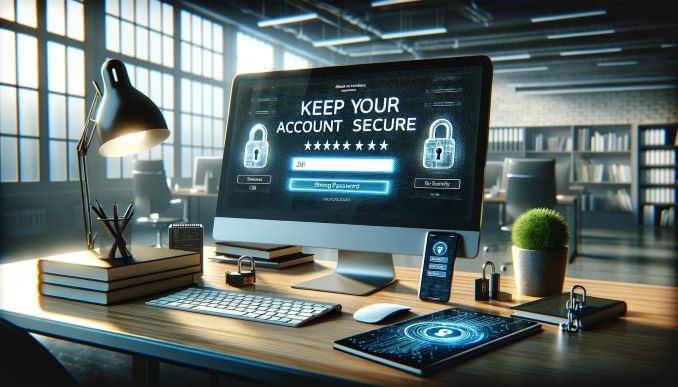Keep your account secure - a practical guide
With site hacks making headlines every day, this is what you MUST do to keep your account secure.

Strong Passwords – This is your first line of defense to stop unauthorized access.
- Use long, complex, and unique passwords for your accounts.
- You could use a passphrase, which is longer and includes a mix of uppercase and lowercase letters, numbers, and symbols.
Two-Factor Authentication – An additional layer of security helps protect your account if your password falls into the hands of malicious actors in a phishing attack.
- Enable 2FA for all accounts that provide the option.
- Use authentication applications or hardware tokens rather than SMS when possible.
Regular Updates – Patches to software help remove vulnerabilities that attackers target to penetrate your systems.
- Change your passwords on a regular basis or whenever you think something went wrong.
- Keep your software, apps, and operating systems up to date to protect against known vulnerabilities.
Secure Networks – This can help secure your account by preventing your data stream from being viewed or changed by unauthorized people.
- Halt transactions via public Wi-Fi or log into a high-profile account that requires a password.
- Use a VPN to make your internet connection more secure.
Account Settings – Remember to check and change account settings on a regular basis.
- Occasionally reevaluate account settings to ensure security controls are still in place.
- Lessen the quantity of personal information posted on the internet.
Security Software – Keeps your account safe by blocking virus and malware programs that might expose your data.
- Install and maintain reputable antivirus and anti-malware software.
- Visit the Chrome Web Store or Firefox Browser Add-Ons to find safety features.
Email Security – Emails are the most common source of phishing attacks and a major target for getting access to sensitive personal and financial information.
- Don’t open attachments or links from unknown sources.
- Use email providers that have leading spam filters with phishing sensing.
Monitoring and Alerts – These services provide real-time alerts of anything irregular happening in your account.
- Subscribe to this service to obtain recent notification on any suspiciousness happening.
- Routinely monitor account statements and logs for any signs of unauthorized access.
Backup and Recovery – Backup and recovery is important to ensure you can restore your data quickly and continue operations with minimal disruption in the event of data loss or a security breach.
- Ensure to backup essential information regularly and have a strategy to recover quickly in the event of data loss.
- Use encryption to secure your backups when storing them in the cloud.
Education and Awareness – Education and awareness are important for keeping your account safe as they train you to recognize potential security threats and phishing attempts.
- Be on the lookout for current security threats and how to mitigate them.
- Inform your friends and family about online threats and how to stay safe online.
Privacy Settings – Privacy settings help control who can see your information, reducing your overall exposure to cyber threats.
- Review and adjust privacy settings on social media and other online platforms.
- Review the permissions granted to apps and websites.